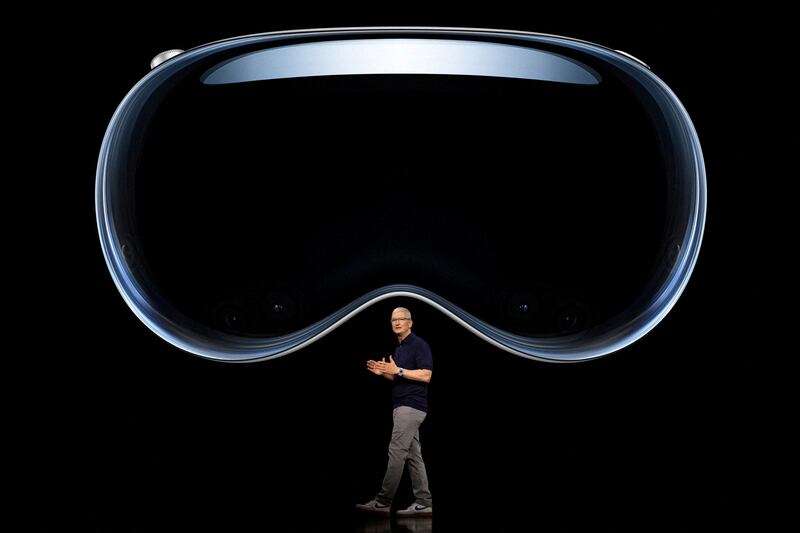The science fiction writer Arthur C Clarke once famously suggested that “any sufficiently advanced technology is indistinguishable from magic". On Monday, at Apple's annual developers’ conference in California, magic was a word used more than once by Apple executives as they took turns to explain for more than 40 minutes what makes the Apple’s newest product, an augmented reality headset called the Vision Pro, the start of a revolution in consumer technology.
Apple hopes the Vision Pro will be the definer of a new category, like the Mac, iPod and iPhone before it. Given the company’s track record of intuitive user interfaces, the curiosity that Vision Pro has generated across the world – in tech circles and among the general public – in the hours since it was announced is unsurprising.
"It's the first Apple product that you look through and not at," Apple's chief executive Tim Cook said as he introduced Vision Pro to the audience. The device is a sophisticated headset that show a user’s apps in the space around them like a heads-up display, but the ability to see through them is more of an illusion. The user’s view of their surroundings is actually a live video feed, as is the image of their eyes seen by others through the lens.
The experience comes at a steep price. When it hits the market “early next year”, the Vision Pro will cost a hefty $3,499 – several times more expensive than competitors, such as Meta’s Quest device. And as extraordinary as some of its technology is, the product will still leave many wanting. The Vision Pro will be powered (for a mere two hours per charge) by an external battery, which users are expected to keep in their pockets and link to the device with a long and rather inelegant wire – an odd feature for a company famed for rolling out highly polished products.
Nonetheless, by focusing on augmented – rather than virtual – reality, Apple has staked part of its future on perfecting what industry experts believe to be the more achievable of the two spaces. The Vision Pro is not Apple’s final word on AR, but rather its opening line.
Consumers in previous years have failed to take as much of a shine to earlier iterations of AR and VR as the companies behind them would like. But the Vision Pro sets a new standard, and so it will serve as a laboratory rat for not only Apple, but thousands of app developers, to see whether a reimagined concept of AR appeals to those of us still living in the real world.
Apple has given assurances that a "foundational goal" of the Vision Pro was to "never be isolated from people around you” ("You can see them and they can see you," said Alan Dye, vice president of human interface design at Apple), but for parents already in the habit of dragging children away from their iPhones, a begoggled AR future is likely to be cold comfort. Technologies designed to be immersive are just that, and it is difficult to see how interacting with someone two feet away from you via a video feed is less isolating than looking them in the eye.
Proponents of AR and VR insist that the two technologies are not only revolutionary, but inevitable. Considering the way that screens and live feeds have absorbed billions of people the world over in recent decades, they are almost certainly right. But those technologies – from iPhones to social media platforms – have also presented many challenges, and reasons to exercise caution about the way they shape our lives. If we can achieve an augmented-reality future in which we have learnt from those challenges, that would be truly magical.





